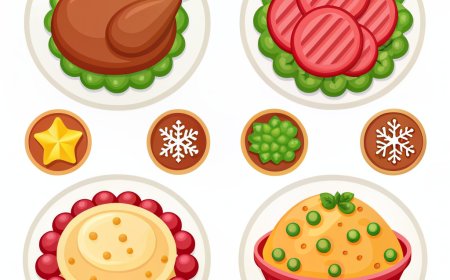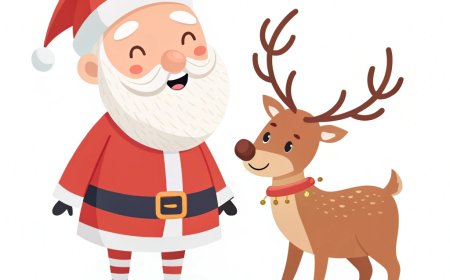Lunar New Year History Traditions and Fun Facts for Students
Discover the history traditions and fun facts about Lunar New Year in this student guide exploring customs foods and celebrations around the world
🏮 Introduction
Every year, millions of people across Asia and around the world celebrate Lunar New Year with colorful parades, delicious food, and family gatherings. Streets glow with red lanterns, the sounds of drums and fireworks fill the air, and lion and dragon dancers twist and leap through crowds.
Also known as the Spring Festival in China, Lunar New Year marks the start of a new year based on the lunar calendar, which follows the cycles of the moon. The exact date changes each year, usually falling between late January and mid-February. For many, it's the most important holiday of the year - a time to honor family, remember ancestors, and welcome good luck for the months ahead.
📜 History and Origins
Lunar New Year has been celebrated for more than 4,000 years. In ancient China, people held festivals at the end of winter to welcome spring, planting season, and new life. Legends tell of a mythical monster called Nian, who would appear at the start of the year to scare villagers. People discovered that loud noises, bright lights, and the color red would frighten Nian away - traditions that continue today.
The lunar calendar is different from the solar calendar used in most of the world. Each year in the lunar cycle is represented by one of 12 zodiac animals, including the rat, tiger, dragon, and rabbit. After 12 years, the cycle repeats.
🥟 Traditions and Customs
🧧 Red Envelopes
Elders give children red envelopes (hongbao in Chinese) filled with money as a symbol of good luck and blessings for the year ahead.
🍜 Festival Foods
Families prepare special dishes such as dumplings for wealth, fish for abundance, and long noodles for a long life.
🐉 Parades and Performances
Lion dances and dragon dances are performed to scare away bad spirits and bring good fortune. Fireworks and firecrackers light up the night.
🏠 Cleaning and Decorating
Before the holiday begins, families clean their homes to sweep away bad luck and decorate with red banners and lanterns to invite prosperity.
🌟 Symbols and Meanings
-
🧧 Red Envelopes - Good luck and blessings.
-
🐉 Dragon - Strength, luck, and power.
-
🥟 Dumplings - Wealth and prosperity.
-
🏮 Lanterns - Lighting the way for a bright future.
🌍 How It's Celebrated Today
Lunar New Year is celebrated in many countries, including China, Vietnam (as Tết), South Korea (as Seollal), and Malaysia. While traditions vary, common themes include family reunions, honoring ancestors, and wishing others health and happiness. In cities around the world, public parades and cultural events share the joy of the season with everyone, no matter their background.
💡 Fun Facts
-
🐇 Each Lunar New Year is linked to one of 12 zodiac animals.
-
🏮 The holiday lasts up to 15 days, ending with the Lantern Festival.
-
🔴 Red is believed to scare away bad luck and evil spirits.
-
🧨 Firecrackers were invented in China and used during the festival to drive away Nian.
-
🌏 Lunar New Year is celebrated by over 2 billion people worldwide.
📚 Vocabulary List
-
Lunar Calendar - A calendar based on the phases of the moon.
-
Zodiac - A cycle of 12 animals used in the Chinese calendar.
-
Ancestor - A person from whom you are descended.
-
Prosperity - Success or wealth.
-
Festival - A special event or celebration.
-
Lantern - A light enclosed in a decorative covering.
-
Tradition - A custom passed down over time.
-
Nian - A mythical creature from Chinese legend.
📝 Key Takeaways
-
Lunar New Year follows the lunar calendar, not the solar one.
-
It is celebrated in many Asian countries with unique traditions.
-
Common customs include red envelopes, special foods, parades, and cleaning the home.
-
Each year is linked to a zodiac animal that repeats every 12 years.
-
The holiday is a time for family, gratitude, and welcoming good fortune.
🧠 Interactive Quiz
1. What is another name for Lunar New Year in China?
A) Dragon Festival
B) Spring Festival
C) Lantern Festival
D) Red Envelope Day
2. Which calendar is Lunar New Year based on?
A) Solar calendar
B) Gregorian calendar
C) Lunar calendar
D) Mayan calendar
3. How many animals are in the Chinese zodiac cycle?
A) 10
B) 12
C) 15
D) 20
4. What food is often eaten to represent long life?
A) Fish
B) Dumplings
C) Noodles
D) Rice cakes
5. What color is believed to bring good luck and scare away bad spirits?
A) Gold
B) Blue
C) Red
D) Green
6. What mythical creature is part of a Lunar New Year legend?
A) Nian
B) Phoenix
C) Kirin
D) Pegasus
7. How long can Lunar New Year celebrations last?
A) 1 day
B) 7 days
C) 10 days
D) 15 days
8. What festival marks the end of Lunar New Year celebrations?
A) Mid-Autumn Festival
B) Lantern Festival
C) Harvest Festival
D) Fireworks Festival






















































